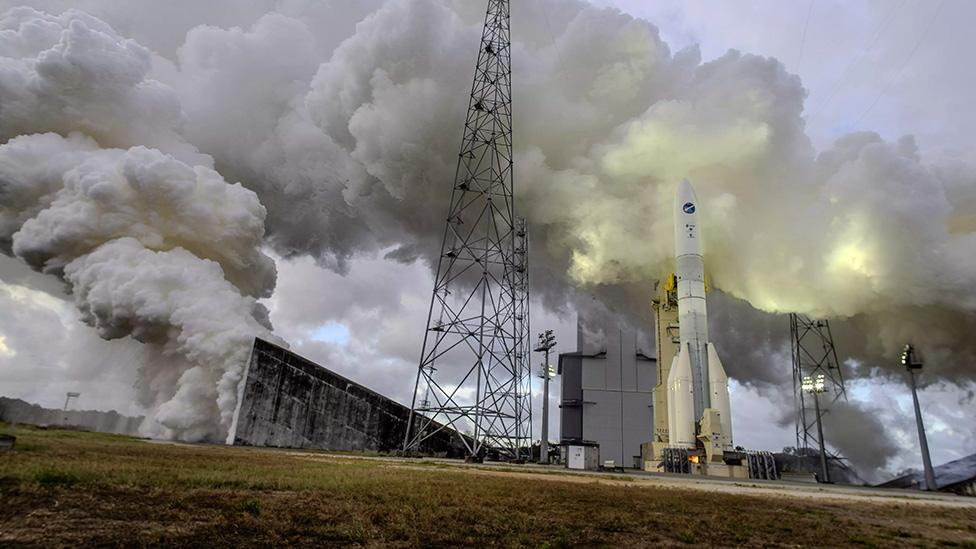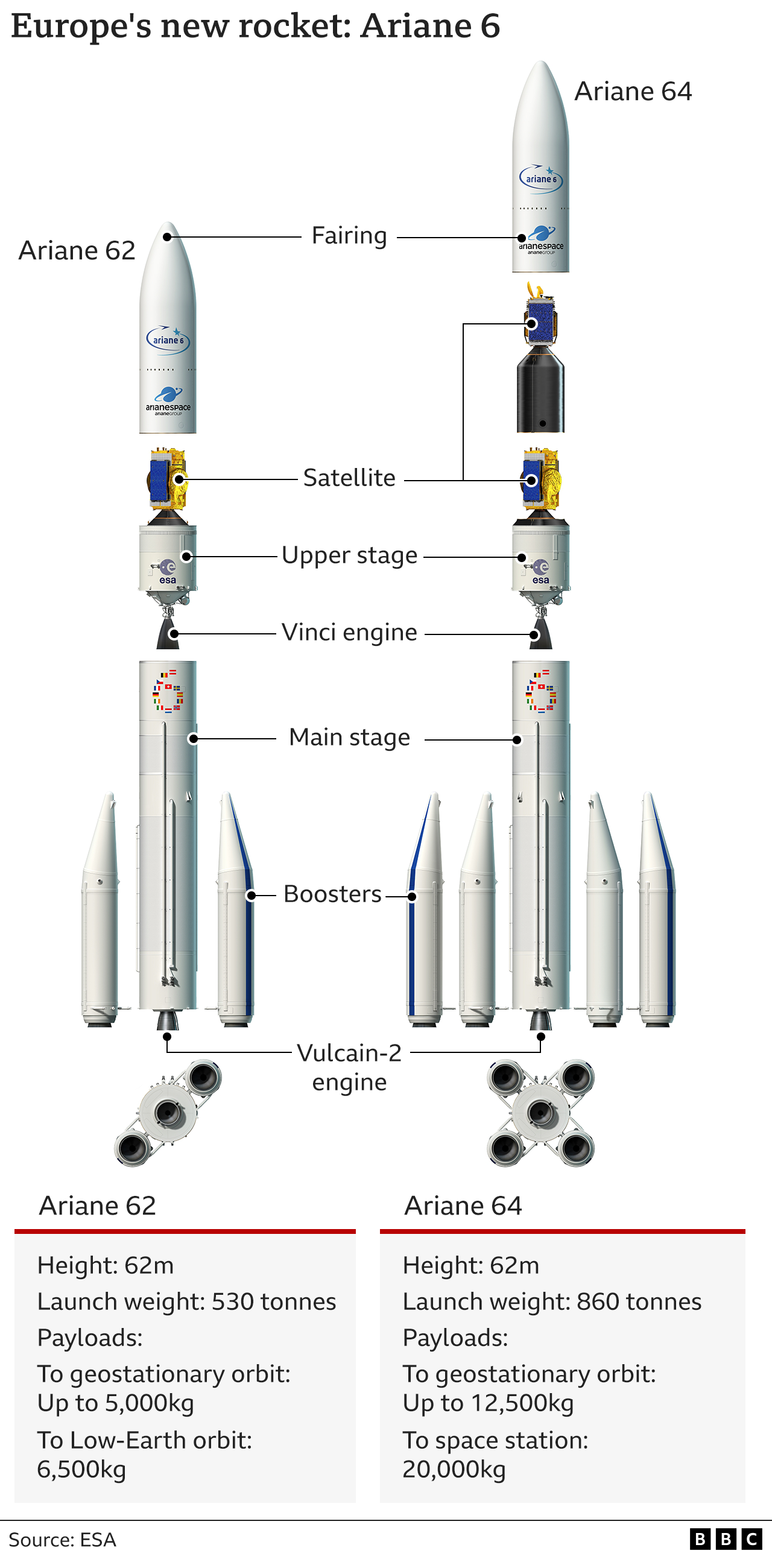Europe finally sets date for Ariane-6 rocket debut
- Published

This month engineers conducted a seven-minute firing of the Ariane-6 main engine
Europe's next-generation heavy-lift rocket, Ariane-6, looks set to make its maiden flight in mid-2024.
The target launch date was announced by Josef Aschbacher, the director general of the European Space Agency (Esa).
It follows successful tests on an engineering model of the 62m-tall (203 ft) vehicle on a new pad at the Kourou spaceport in French Guiana.
Ariane-6 development has cost in the region of €4bn (£3.5bn) and is four years behind schedule.
Its delay has added to a profound crisis in Europe, severely limiting the continent's ability to get satellites into orbit.
Europe essentially has no launch service currently, after retiring the previous-generation rocket, Ariane-5, in July; and being forced to suspend operations of its medium-lift vehicle, Vega-C, following a series of flight failures.
Ariane-6's debut cannot come soon enough.
"Assuming everything goes nominal, without any major hiccup, we expect that Ariane-6 will have its inaugural flight between 15 June and 31 July next year," Dr Aschbacher told reporters.
"I think it's really fundamental that we regain our foothold on the launcher landscape, and now with a good path to the inaugural flight we are a good way there."
Watch the moment of ignition as the main engine on Europe's new Ariane rocket was tested
The mid-2024 target was set following a successful long-duration demonstration firing of the new rocket's core power unit: the Vulcain-2 engine.
This was conducted on a dummy rocket. The first flight model will now be shipped from Europe to French Guiana to begin the inaugural flight campaign, which will begin in April.
Europe used to be the dominant force for the launch of large satellites. For almost 30 years, the Ariane-5 was a popular choice for telecommunications companies wanting to put spacecraft high above the Earth.
But the vehicle's position was eventually undercut by US entrepreneur Elon Musk, whose re-usable Falcon-9 rockets can now loft payloads for significantly lower prices.

The Ariane 6 will work in two versions to complete a range of missions
The Ariane-6 is intended to be at least 40% cheaper than the Ariane-5 but remains an "expendable" design - a new rocket is needed for every mission.
It will operate in two configurations. One will incorporate two solid-fuel side boosters for lifting medium-sized satellites. The other will have four strap-on boosters to lift the heaviest spacecraft.
The core stage is supplemented with a second, or upper, stage that will place the payloads in their precise orbits. For these deployments, Ariane-6 will have an additional engine called Vinci that can be stopped and restarted several times.
This will be important for the delivery into space of large networks, or constellations, of satellites - a key trend of the moment. Of the 28 Ariane-6 launches so far ordered, 18 will be for Amazon.com's Kuiper system, which aims to launch thousands of spacecraft to provide internet connections around the world.
